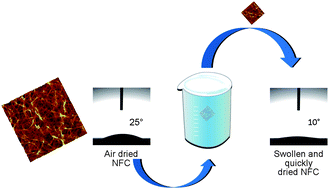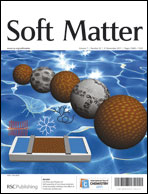Experimental evidence on medium driven cellulose surface adaptation demonstrated using nanofibrillated cellulose†
Abstract
This paper combines theoretical considerations with experimental evidence to explain the behavior of cellulose when exposed to different media. The observations are explained based on the amphiphilic character of the cellulose molecule and fundamental physicochemical phenomena. Nanofibrillated cellulose was chosen to demonstrate the phenomena since due to its high surface area the effects at issue are pronounced.


 Please wait while we load your content...
Please wait while we load your content...